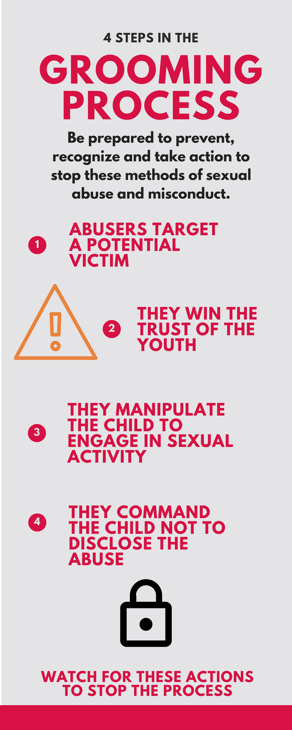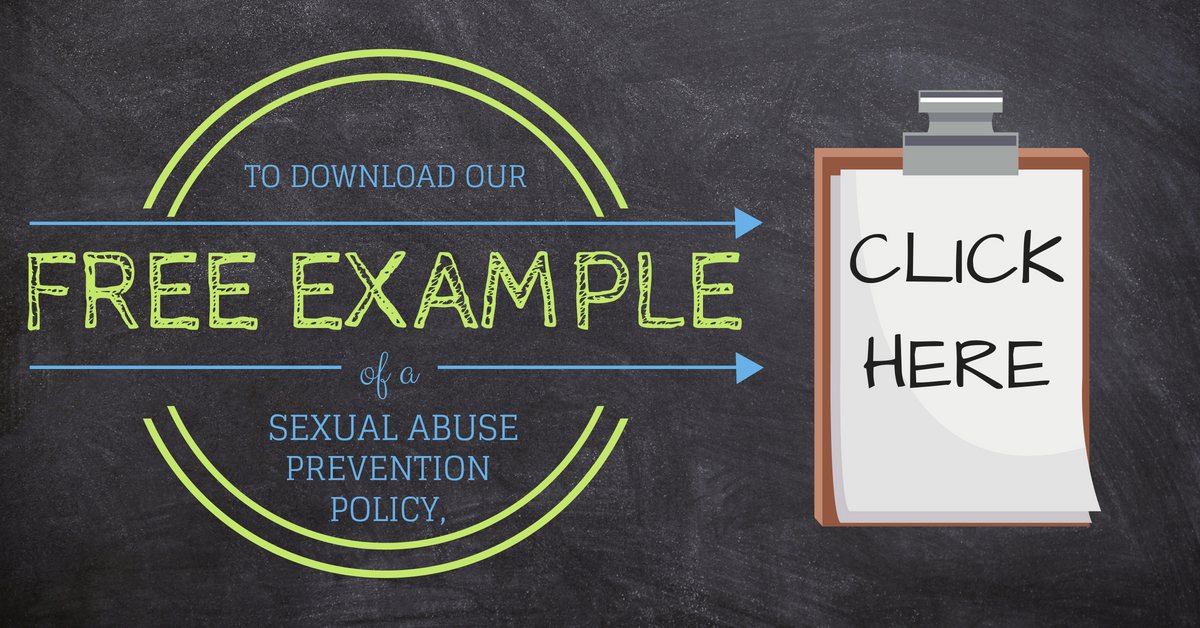Follow this simple prevention plan to help give children the childhoods they deserve
It’s not an easy topic to discuss, but the conversation needs to be had. Sexual abuse and misconduct occurs at high rates throughout our country. Tragically, the victims of these terrible situations are often children. It’s essential to be fully aware of the signs of sexual abuse and remember that teachers and school administrators are mandatory reporters of this type of misconduct. Prepare your staff to respond and report properly in order to provide a safe environment for children and avoid legal repercussions.
The disheartening statistics

Sexual abuse and misconduct is, unfortunately, happening more often than most people realize. According to the National Center for Victims of Crime, 1 out of 3 girls and 1 out of 5 boys are victims of sexual abuse by age 18. ChildHelp.org states that a report of child abuse is made every 10 seconds in the U.S. In 2014, state agencies found enough victims of child maltreatment to fill 10 modern football stadiums. If it’s hard to believe these numbers, it may be because 73 percent of child victims don’t tell anyone about the abuse for at least a year. Others never disclose it.
Protect your youth and school with an effective policy
Prevention of sexual abuse and misconduct is essential within organizations that are engaged in activities with minors or youth. A thorough prevention plan can protect you from costly lawsuits and protect your youth from terrible incidents. This plan can be completed in a few simple, but vital steps:
- Select your employees carefully. Monitor who is being brought on-board. Increase the value of this process by using:
- Formal applications
- Professional and personal reference checks
- Face-to-face interviews
- Thorough background checks for employees, volunteers, board members, contractors and others affiliated with your organization
- Increase awareness of your staff’s responsibility to report sexual abuse and misconduct. Publish a prevention policy that is easy to understand and share it with everyone associated with your organization. Remind them frequently that one of the duties of their role is to report any misconduct as soon as they are led to believe it’s happening. Try to eliminate fear to lodge a complaint due to a position without authority or tenure to the best of your ability.
- Aim to achieve the deterrent effect in which a perpetrator may be less likely to commit misconduct if he or she knows that prevention training, avenues of complaint and clear penalties are in place.
- Train all groups on policies and procedures. Regularly educate teachers and other employees, volunteers, youth, parents and guardians to send the message that wrongdoing is not tolerated. Inform them that immediate response procedures are in place, and allow the opportunity for questions to be answered during and after trainings.
- Maintain healthy boundaries. It is important to understand “grooming” behaviors, defined as methods by which abusers follow this specific process: (see infographic). More examples of inappropriate grooming behaviors include, but are not limited to:
- An adult being alone with a child in unsupervised settings
- Giving a child gifts and showing favoritism
- Physical touching (a process of desensitizing the youth to contact)
- Communications unusual in frequency, duration or topic

- Investigate and respond according to procedures. Teachers and school administrators must report allegations or incidents to the police immediately. Follow the legal requirements in your state to continue the report. The police will be responsible for investigating situations involving:
- Allegations against positions of authority
- A conflict of interest present in an in-house investigation
- Multiple complaints
- A perception that investigating internally would be insufficient due to lack of specially-trained resources
- Mandate signed acknowledgement forms. Along with the full details of your policy, offer a place on the forms to ask questions about procedures, trainings, etc.
- Monitor your risk management program. Designate specific individuals to be responsible for monitoring the effectiveness of the sexual abuse risk management program. Monitor compliance and solicit feedback in order to improve the understanding and impact of your efforts.
Working toward a better future
Your organization has the opportunity to beat the statistics. Be proactive, have the difficult conversations and follow strict policies and procedures. You can leave a positive, lasting impression on youth as they move to adulthood. Developing a thorough sexual abuse prevention program is a huge step in the right direction.
DISCLAIMER
The information contained in this blog post is intended for educational purposes only and is not intended to replace expert advice in connection with the topics presented. Glatfelter specifically disclaims any liability for any act or omission by any person or entity in connection with the preparation, use or implementation of plans, principles, concepts or information contained in this publication.
Glatfelter does not make any representation or warranty, expressed or implied, with respect to the results obtained by the use, adherence or implementation of the material contained in this publication. The implementation of the plans, principles, concepts or materials contained in this publication is not a guarantee that you will achieve a certain desired result. It is strongly recommended that you consult with a professional advisor, architect or other expert prior to the implementation of plans, principles, concepts or materials contained in this publication.
This blog post may contain the content of third parties and links to third party websites. Third party content and websites are owned and operated by an independent party over which Glatfelter has no control. Glatfelter makes no representation, warranty, or guarantee as to the accuracy, completeness, timeliness or reliability of any third party content. References to third party services, processes, products, or other information does not constitute or imply any endorsement, sponsorship or recommendation by Glatfelter, unless expressly stated otherwise.
Related posts
Help ensure your school's roof is protected against seasonal risks by prioritizing inspections and preventative maintenance.
How you can help protect your most important asset: your people, and how to help them set up their insurance benefits so that they reflect their wishes.
Consider these best practices to avoid significant property damage, costly repairs and potential interruptions to your school day due to pipe freezing.




.png?height=300&name=Glatfelter%20Team%20-%20Blog%20-%20Author%20(1).png)




Submit a Comment